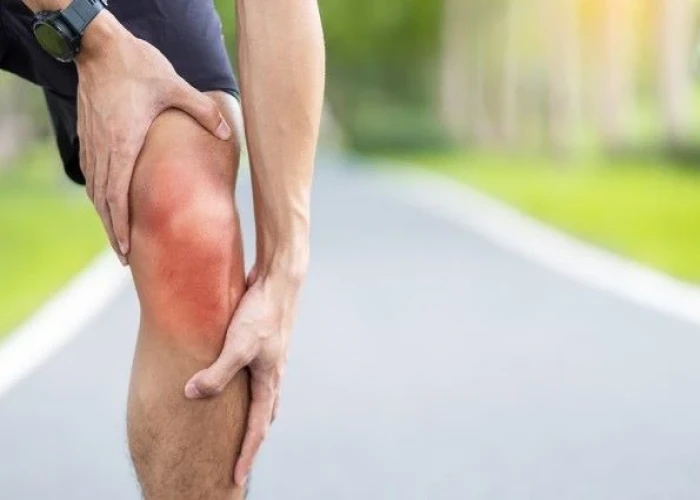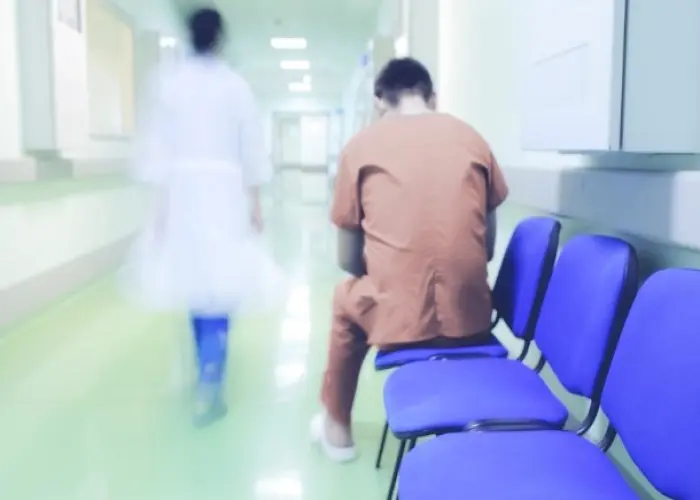 Welcome
Welcome
“May all be happy, may all be healed, may all be at peace and may no one ever suffer."
Patellar tendinitis

Patellar tendinitis, also known as jumper's knee, is a common overuse injury that affects the patellar tendon, which connects the kneecap to the shinbone. It typically occurs in athletes, especially those involved in sports that require jumping, such as basketball and volleyball.
The condition is caused by repeated stress on the patellar tendon, leading to small tears in the tissue and inflammation. Symptoms of patellar tendinitis include pain and tenderness in the front of the knee, especially around the patellar tendon, stiffness in the knee joint, and weakness in the thigh muscles.
Treatment for patellar tendinitis usually involves rest, ice, compression, and elevation of the affected knee to reduce pain and inflammation. Physical therapy exercises can help to strengthen the muscles around the knee and improve flexibility. In more severe cases, a knee brace or immobilization with a cast or splint may be necessary. Nonsteroidal anti-inflammatory drugs (NSAIDs) can also be used to manage pain and inflammation.
Prevention measures for patellar tendinitis include proper stretching and warm-up exercises before physical activity, avoiding excessive jumping or squatting, and wearing appropriate footwear with good shock absorption. It is important to rest and seek medical attention if symptoms of patellar tendinitis persist or worsen.
Research Papers
Disease Signs and Symptoms
- Knee pain
- Swollen knee
- Difficulty straightening knee fully
Disease Causes
Patellar tendinitis
Patellar tendinitis is a common overuse injury, caused by repeated stress on your patellar tendon. The stress results in tiny tears in the tendon, which your body attempts to repair.
But as the tears in the tendon multiply, they cause pain from inflammation and weakening of the tendon. When this tendon damage persists for more than a few weeks, it's called tendinopathy.
Disease Prevents
Patellar tendinitis
To reduce your risk of developing patellar tendinitis, take these steps:
- Don't play through pain. As soon as you notice exercise-related knee pain, ice the area and rest. Until your knee is pain-free, avoid activities that put stress on your patellar tendon.
- Strengthen your muscles. Strong thigh muscles are better able to handle the stresses that can cause patellar tendinitis. Eccentric exercises, which involve lowering your leg very slowly after extending your knee, are particularly helpful.
- Improve your technique. To be sure you're using your body correctly, consider taking lessons or getting professional instructions when starting a new sport or using exercise equipment.
Disease Treatments
Doctors typically begin with less invasive treatments before considering other options, such as surgery.
Medications
Pain relievers such as ibuprofen (Advil, Motrin IB, others) or naproxen sodium (Aleve, others) may provide short-term relief from pain associated with patellar tendinitis.
Therapy
A variety of physical therapy techniques can help reduce the symptoms associated with patellar tendinitis, including:
- Stretching exercises. Regular, steady stretching exercises can reduce muscle spasm and help lengthen the muscle-tendon unit. Don't bounce during your stretch.
- Strengthening exercises. Weak thigh muscles contribute to the strain on your patellar tendon. Exercises that involve lowering your leg very slowly after extending it can be particularly helpful, as can exercises that strengthen all of the leg muscles in combination, such as a leg press.
- Patellar tendon strap. A strap that applies pressure to your patellar tendon can help to distribute force away from the tendon and direct it through the strap instead. This may help relieve pain.
- Iontophoresis. This therapy involves spreading a corticosteroid medicine on your skin and then using a device that delivers a low electrical charge to push the medication through your skin.
Surgical and other procedures
If conservative treatments don't help, your doctor may suggest other therapies, such as:
- Corticosteroid injection. An ultrasound-guided corticosteroid injection into the sheath around the patellar tendon may help relieve pain. But these types of drugs can also weaken tendons and make them more likely to rupture.
- Platelet-rich plasma injection. This type of injection has been tried in some people with chronic patellar tendon problems. Studies are ongoing. It is hoped the injections might promote new tissue formation and help heal tendon damage.
- Oscillating needle procedure. This outpatient procedure is performed using local anesthesia. Your doctor uses ultrasound imaging to guide a small oscillating needle that cuts away the damaged area while sparing healthy tendon. This is a relatively new procedure, but results have shown promise.
- Surgery. In rare cases, if other treatments fail, your doctor might suggest surgical debridement of the patellar tendon. Some procedures can be done through small incisions around your knee.
Disease Diagnoses
Disease Allopathic Generics
Disease Ayurvedic Generics
Disease Homeopathic Generics
Disease yoga
Patellar tendinitis and Learn More about Diseases

Ampullary cancer

Charcot-Marie-Tooth disease

Swollen knee

Female sexual dysfunction

Bacterial vaginosis

Suspicious breast lumps

Delirium

X-linked agammaglobulinemia
patellar tendinitis, প্যাটেললার টেন্ডিনাইটিস
To be happy, beautiful, healthy, wealthy, hale and long-lived stay with DM3S.
